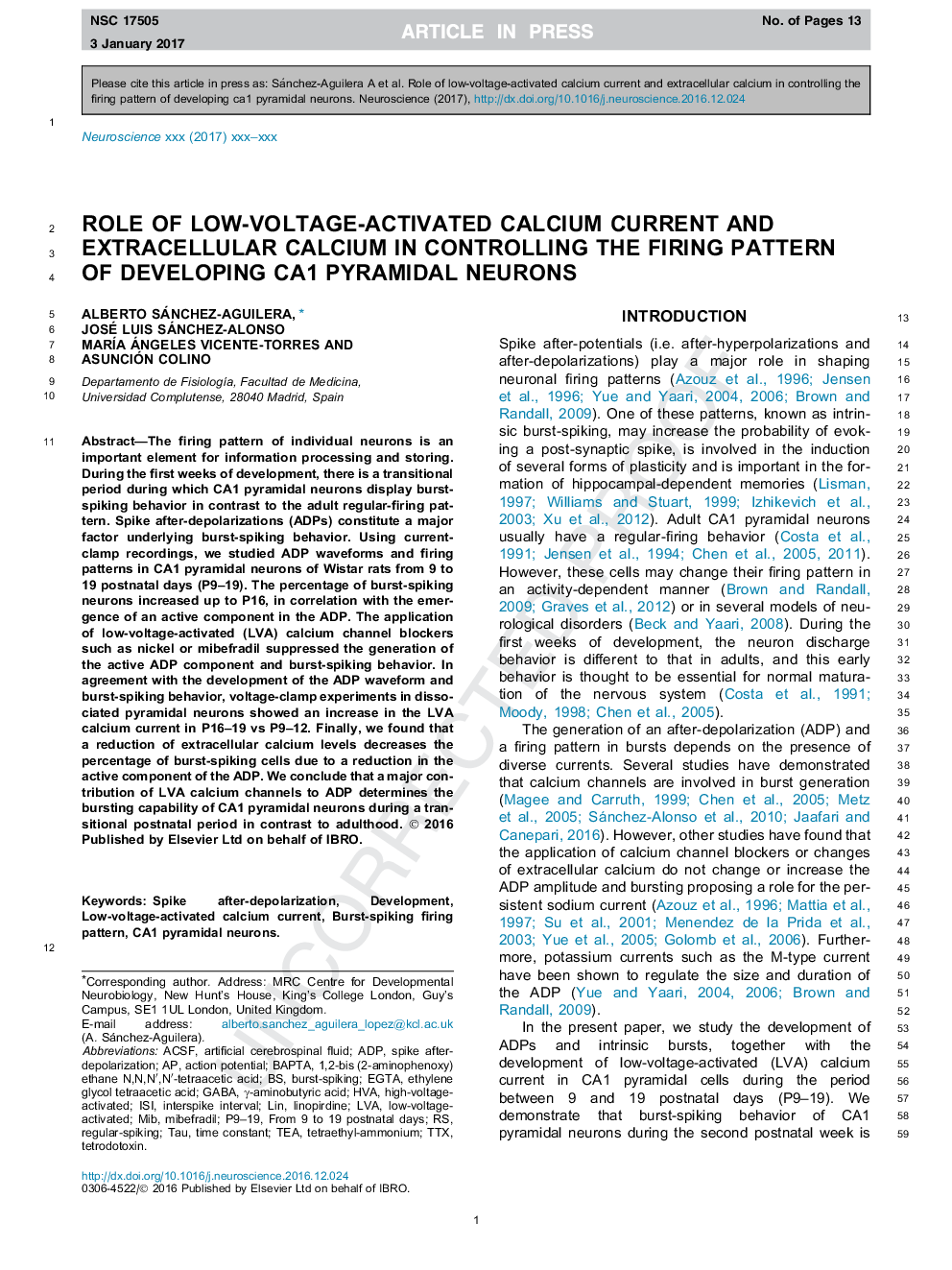| Article ID | Journal | Published Year | Pages | File Type |
|---|---|---|---|---|
| 5737749 | Neuroscience | 2017 | 13 Pages |
Abstract
The firing pattern of individual neurons is an important element for information processing and storing. During the first weeks of development, there is a transitional period during which CA1 pyramidal neurons display burst-spiking behavior in contrast to the adult regular-firing pattern. Spike after-depolarizations (ADPs) constitute a major factor underlying burst-spiking behavior. Using current-clamp recordings, we studied ADP waveforms and firing patterns in CA1 pyramidal neurons of Wistar rats from 9 to 19 postnatal days (P9-19). The percentage of burst-spiking neurons increased up to P16, in correlation with the emergence of an active component in the ADP. The application of low-voltage-activated (LVA) calcium channel blockers such as nickel or mibefradil suppressed the generation of the active ADP component and burst-spiking behavior. In agreement with the development of the ADP waveform and burst-spiking behavior, voltage-clamp experiments in dissociated pyramidal neurons showed an increase in the LVA calcium current in P16-19 vs P9-12. Finally, we found that a reduction of extracellular calcium levels decreases the percentage of burst-spiking cells due to a reduction in the active component of the ADP. We conclude that a major contribution of LVA calcium channels to ADP determines the bursting capability of CA1 pyramidal neurons during a transitional postnatal period in contrast to adulthood.
Keywords
Related Topics
Life Sciences
Neuroscience
Neuroscience (General)
Authors
Alberto Sánchez-Aguilera, José Luis Sánchez-Alonso, MarÃa Ángeles Vicente-Torres, Asunción Colino,
